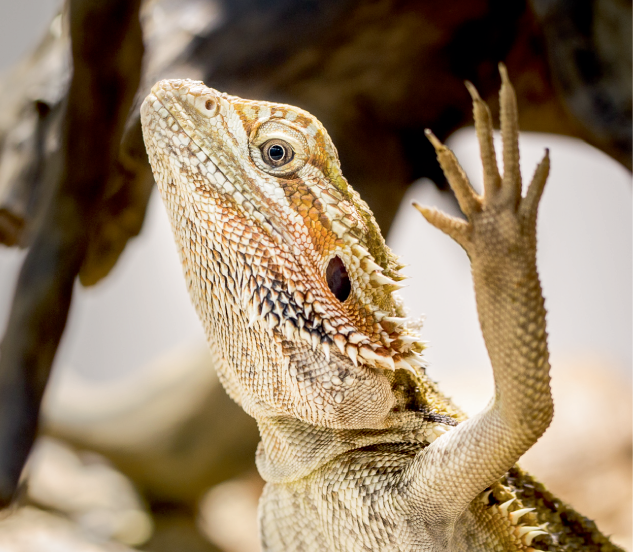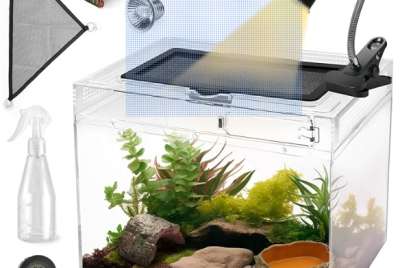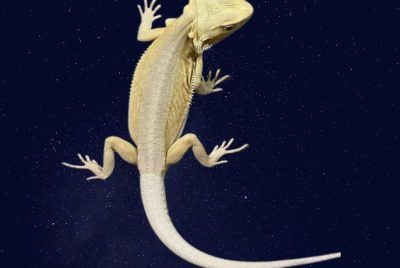Bearded Dragon Behavior and Personality
Bearded dragons are unique and fascinating pets, offering a blend of quirky behaviors and a calm demeanor. Understanding their personality and actions not only enhances your bond but also ensures their health and happiness. Let’s dive into their behavior and what it means.
Understanding Bearded Dragon Behavior and Personality
Bearded dragons are unlike any other pet you’ve had. They’re calm, expressive, and have a wide range of behaviors that reflect their needs and mood. Recognizing these actions can help you better care for and bond with them.
Key Personality Traits of Bearded Dragons
Curious Explorers
Bearded dragons love to explore! You’ll often find them climbing, inspecting their tank, or even watching your movements closely.
Gentle and Calm Nature
Despite their curiosity, bearded dragons are incredibly gentle, making them perfect for handling and bonding with humans.
Typical Behaviors and What They Mean
Head Bobbing
This is a sign of dominance or readiness to mate. A fast bob indicates assertiveness, while slower movements are more submissive.
Arm Waving
A dragon waving its arm is showing submission or friendliness, often to another dragon or even you.
Glass Surfing
When they scratch or climb the tank walls, they’re likely bored or stressed. It’s a sign to enrich their environment or check for stressors.
Tail Twitching
This indicates excitement, often observed during hunting or moments of high alert.
Social Interaction Behaviors
Communication with Humans
Bearded dragons recognize their owners and may follow your movements or rest calmly on you, showing trust and comfort.
Interactions with Other Dragons
They can coexist but may show dominant behaviors like head bobbing. Supervision is key to prevent territorial issues.
Body Language Explained
Beard Puffing
When they puff out their beard or turn it black, they’re feeling threatened or trying to assert dominance.
Color Changes
Bearded dragons change colors to regulate temperature or express emotions. Darker shades often indicate stress or coldness.
Understanding Feeding Behavior
Hunting Instincts
During feeding time, dragons exhibit a strong hunting instinct, stalking their prey before striking.
Food Aggression
Lunging at food or being overly eager is common. Regular feeding schedules and hand-feeding can help moderate this.
Signs of Stress or Discomfort
Hiding
If your dragon hides for long periods, it could be stressed due to environmental factors like loud noises or poor tank setup.
Black Beard Display
A black beard is a key indicator of stress, discomfort, or aggression. Check for possible triggers.
Sleeping Habits of Bearded Dragons
Patterns and Positions
These diurnal reptiles sleep at night, often in quirky positions like propping against glass or lying on their backs.
Brumation Behavior
During colder months, they may enter brumation, a hibernation-like state where they sleep more and eat less.
Playful Activities and Enrichment
Enrichment Ideas
Provide climbing structures, digging areas, and supervised outdoor time to keep your dragon engaged and happy.
Recognizing Happy Behaviors
A content dragon may exhibit bright colors, a relaxed posture, and curiosity in its surroundings.
Training Bearded Dragons
Simple Commands
Bearded dragons can learn basic commands, like coming when called. Hand-feeding is an excellent way to reinforce training.
Building Trust
Consistency and patience are key to building a bond. Over time, they’ll associate you with safety and care.
Health-Related Behaviors to Watch For
Lethargy
If your dragon is unusually inactive, it could signal illness or an improper environment.
Changes in Appetite
A sudden lack of interest in food may indicate health issues or environmental stress.
How to Bond with Your Bearded Dragon
Spending Quality Time
Let them explore a safe area or sit on your shoulder to strengthen your connection.
Gentle Handling Tips
Always handle your dragon gently and consistently. Avoid sudden movements to ensure they feel secure.
Adapting to New Environments
How They React
Bearded dragons may hide or refuse food when introduced to a new space. This is normal as they adjust.
Helping Them Settle
Maintain a stable tank setup, introduce familiar smells, and minimize stress during the transition.
Understanding Their Emotional Responses
Fear vs. Curiosity
A frightened dragon will puff up or hide, while a curious one explores and watches closely.
Recognizing Contentment
Relaxed posture, bright colors, and steady eye contact often signal happiness.
Common Myths About Bearded Dragon Behavior
Myth 1: Head Bobbing Means Anger
Not always! It can also signify excitement or communication.
Myth 2: Bearded Dragons Thrive in Groups
They’re solitary creatures by nature and prefer their own space.
Conclusion
Bearded dragons are unique, intelligent pets that thrive on understanding and care. By observing their behaviors and catering to their needs, you’ll build a bond that’s both rewarding and long-lasting. Every head bob, wave, or glass surf is a glimpse into their fascinating world!
FAQs
1. Why does my bearded dragon wave its arm?
It’s a sign of submission or friendliness, often directed at other dragons or you.
2. How do I reduce my dragon’s stress?
Ensure a proper tank setup, minimize loud noises, and handle them gently.
3. What does a black beard mean?
A black beard usually signals stress, discomfort, or sometimes aggression.
4. Can I train my bearded dragon?
Yes, they can learn simple commands like coming to you with consistent training and treats.
5. Is brumation normal?
Absolutely! It’s a natural hibernation-like behavior during cooler months.




